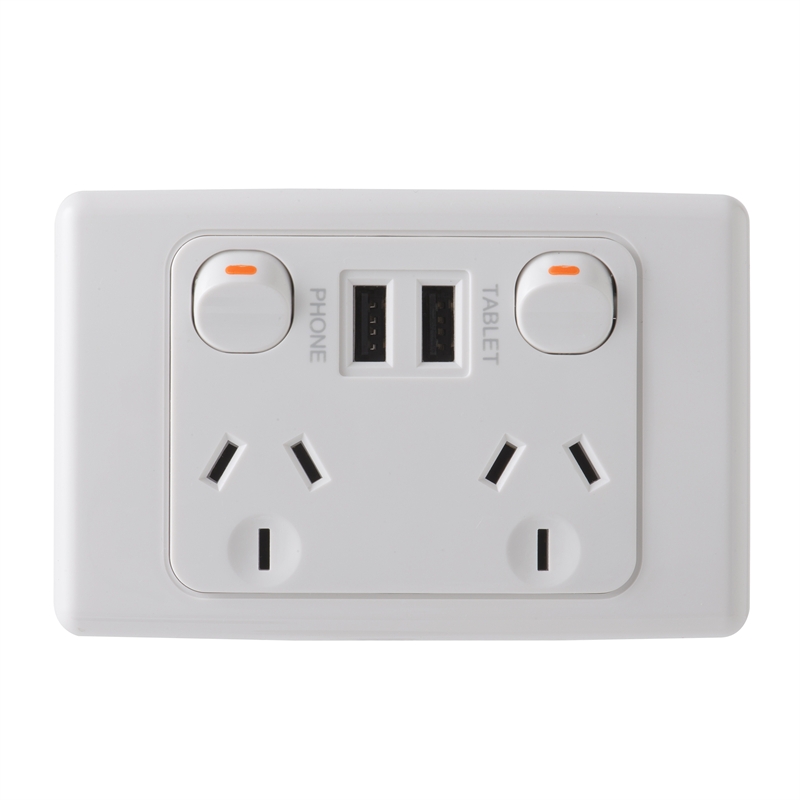Earth pin doesn’t cause the plug to murder your feet like the UK plug.
Angled pins to prevent cross polarisation.
Localised power switch per socket so you can turn something on or off with your toe and not bend down to unplug it.
Looks like a ghost face and when in the double gang formation the switches when on looks like the plate is high.
And the thin pins means that with any weight (wall-wart, etc.), it starts to come out.
Doubly so if it’s set into thin plasterboard that already wobbles.
Thin stamped construction is cheap, but can still be fitted with sleeving on the live (active and neutral) pins like UK & europlug, but not US plugs. This prevents objects or fingers getting to live pins on a partially inserted plug.
Industry has agreed that leads exit either straight out, or down-and-right, so there is no conflict for horizontal or vertical sockets. Sockets are universally installed earth-down.
Type I
Earth pin doesn’t cause the plug to murder your feet like the UK plug.

Angled pins to prevent cross polarisation.
Localised power switch per socket so you can turn something on or off with your toe and not bend down to unplug it.
Looks like a ghost face and when in the double gang formation the switches when on looks like the plate is high.
The main problem with type I (and a few others) is that it’s not recessed. If it comes loose a bit, you still have the problem of exposed live pins.
And the thin pins means that with any weight (wall-wart, etc.), it starts to come out.
Doubly so if it’s set into thin plasterboard that already wobbles.
Pins are insulated since 2003.
Also:
Thin stamped construction is cheap, but can still be fitted with sleeving on the live (active and neutral) pins like UK & europlug, but not US plugs. This prevents objects or fingers getting to live pins on a partially inserted plug.
Industry has agreed that leads exit either straight out, or down-and-right, so there is no conflict for horizontal or vertical sockets. Sockets are universally installed earth-down.
Reasonably compact.
New world solutions. I agree.
Yep us Aussies have the objectively best plug.
I’m a G guy at heart but use I now. My main issue is how easily the pins can bend.